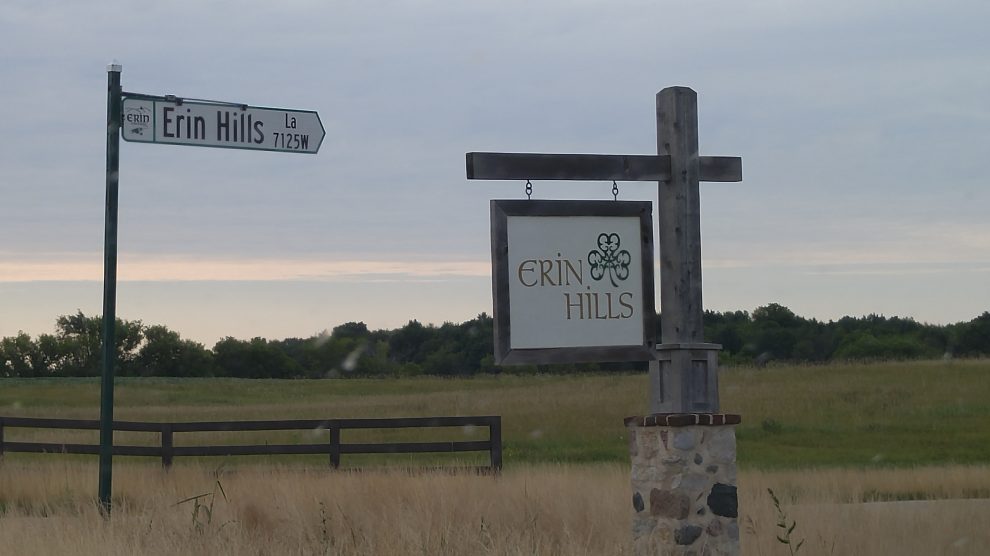Erin Hills wasn’t constructed to host a major golf championship. It was built for it long before man even walked its grounds. Now, on the verge of hosting its biggest tournament, the 2017 U.S. Open, the public golf course in southeastern Wisconsin is ready for its largest audience.
Just beginning its second decade of play, the spotlight will never be brighter than this week, when fans and critics alike will pick apart every blade of grass in judgment of the newest major championship venue. Designed by Dr. Michael Hurdzan, Dana Fry and Ron Whitten, those with their fingerprints on Erin Hills welcome the attention on their minimalist design.
“Eighty-five to 90-percent of what was initially there is truly exactly the same from before we ever stepped foot on the land. It was never altered,” said Fry, now a principle of Fry/Straka Global Golf Course Design, who has stayed active in fine-tuning the property in advance of the U.S. Open. “It was a cumulative team effort. When you go out there now, I almost defy somebody to tell me where we did or didn’t move dirt, because you can’t tell. It looks incredibly natural.”
With a new course hosting America’s golf championship, natural comparisons have been made to the debut of Chambers Bay for the 2015 U.S. Open. Drought-plagued fairways and bumpy greens became a bigger storyline two years ago than anybody expected. As the next new venue, how would Erin Hills deal with the expected questions?
One simple answer was already in place: bentgrass.
Erin Hills does employ the fescue grasses that gave golfers headaches at Chambers Bay. Unlike in 2015, however, that grass is reserved only for the fairways and natural areas. The greens at Erin Hills are a smooth layout of 100-percent A-4 bentgrass.
“What separates us more than anything else is our greens,” said Erin Hills superintendent Zach Reineking. “Through all of our trials and tribulations, our greens are one thing we’ve been able to hang our hat on.”
“When the first pros show up, that’s the first buzz you’re going to hear: the greens are unbelievable,” Fry says with confidence. “I’d be stunned if anybody complains anywhere about turfgrass conditions.”
The confidence comes from collaboration. Dr. Hurdzan, a foremost expert in the science of turfgrass, championed for the use of fescue grasses in the fairways, and a team effort with the United States Golf Association (USGA) brought the bentgrass to the tees and greens. The result is a pure golf course and a case study on what happens when all invested parties come together with a common goal.
“You won’t have any conflicting grass types,” said Darin Bevard, director of Championship Agronomy for the USGA Green Section. “For a new venue, it’s always exciting to see how things play out.”
A governing body that is committed to the fiercest test of golf, marrying playability with aesthetics has become a hot-button topic. It has gotten the attention of the USGA, perhaps more than ever.
“When we arrive on site, we don’t want to see a stressed golf course,” Bevard said. “We want to see a healthy golf course. I think with Chambers Bay, part of the uproar is that it looked so different. One thing we learned is that there is a certain visual perception of what a golf course should look like.”
That prompted a unique solution from Erin Hills, under the ownership of Andy Ziegler. The course has been closed since the season ended in 2016, and didn’t open until golfers arrive for the U.S. Open this summer, a huge financial commitment from a daily-fee facility. While there is no room for error, Reineking, Fry and all involved can now peak at the perfect time. It won’t be brown. Erin Hills will be at its best.
“What’s great about it is that it gives us amazing flexibility,” Reineking said. “We’re not in a situation where we are confined to doing some of the invasive practices around [daily play] schedules. We can do things out of the ordinary.”
“Erin Hills is all-in,” Bevard adds.
Away from the overwhelming spotlight the U.S. Open will provide, a commitment to the preservation of the property has always been the secret weapon for Erin Hills this summer. The migration of glaciers over the land carved a unique piece of property with natural amphitheatres taking shape. Fans will watch the action from a perch that has been there since before civilization arrived in Wisconsin. For those who conceived the course, and those tasked with maintaining it, Mother Nature may be their number-one partner.
“The first time I met [then USGA Executive Director] David Fay, before construction on Erin Hills ever started, he said it was one of the grandest stages he had ever seen,” Fry said. “You can’t build what Erin Hills has.”
Showtime!

